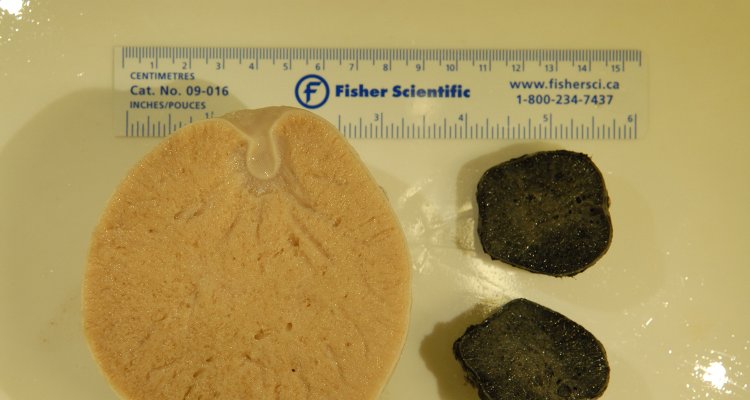Study Warns: Deep Sea Mining Poses Disastrous Threat to Marine Animals
In a recent study published in Deep-Sea Research Part I, researchers of Wageningen University & Research and the University of Bergen showed that release of deep-sea mining particles can have severe detrimental effects on deep-sea fauna.
Effects of mining plumes were simulated by exposing the common deep-sea sponge Geodia barretti and its associated brittle star species to a field-relevant concentration of suspended particles made from crushed seafloor massive sulphide (SMS) deposits. SMS deposits are large three-dimensional, geological formations at the sea floor and a primary target for deep sea mining, because they contain large amounts of valuable metals.
Ten-fold increase in dead tissue
The study revealed an alarming tenfold increase in tissue necrosis in the sponges following exposure to suspended SMS particles. All brittle stars in the experiment perished within ten days of exposure, probably because of the toxic metal exposure. Concentrations of iron and copper were found to be ten times higher in SMS-exposed sponges, demonstrating the accumulation of the suspended mining particles in the tissues of these filter-feeding animals.
First wake-up call
According to research leader and marine biologist Erik Wurz, the study results are a first wake-up call. “They underscore the urgent need for comprehensive assessments of deep-sea mining impacts on marine ecosystems”, he says. “The adverse effects observed on Geodia barretti and associated species signal potential disruptions in benthic-pelagic coupling processes, necessitating further research and to establish guidelines for protection of this deep-sea fauna.”
Bottom of North Atlantic: not a barren desert
This study matters, according to Erik Wurz, because it indicates the potential ecological risks associated with deep-sea mining activities. It has recently been shown that large proportions of the deep ocean seafloor in the North Atlantic Ocean are very prolific, sponge-dominated ecosystems rather than barren deserts that is generally assumed. By showing the impact of mining particles on these sponge grounds, the study underscores the need for sustainable management practices to mitigate adverse effects of mining on this marine biodiversity.

